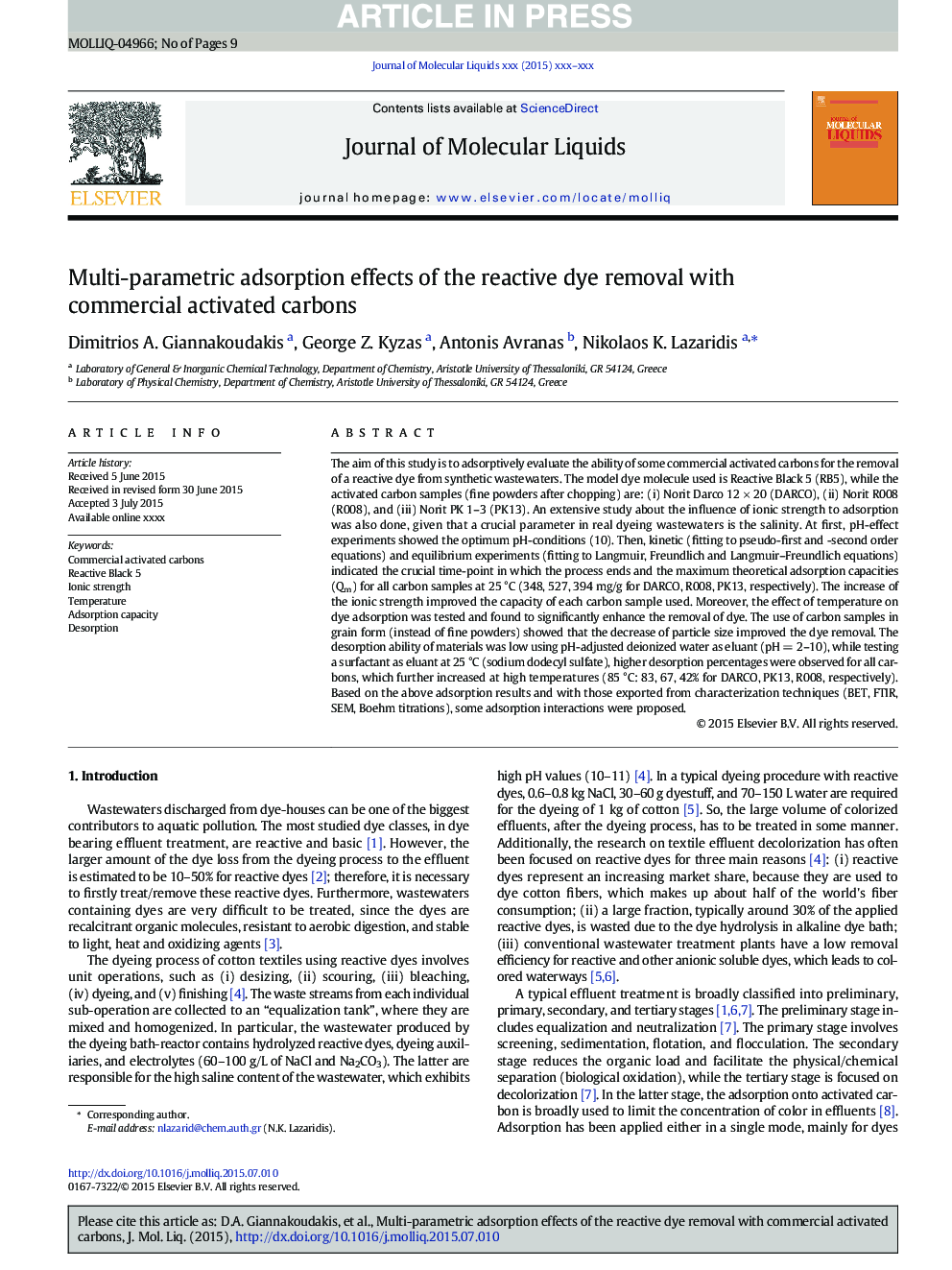| Article ID | Journal | Published Year | Pages | File Type |
|---|---|---|---|---|
| 5410490 | Journal of Molecular Liquids | 2016 | 9 Pages |
Abstract
The aim of this study is to adsorptively evaluate the ability of some commercial activated carbons for the removal of a reactive dye from synthetic wastewaters. The model dye molecule used is Reactive Black 5 (RB5), while the activated carbon samples (fine powders after chopping) are: (i) Norit Darco 12 Ã 20 (DARCO), (ii) Norit R008 (R008), and (iii) Norit PK 1-3 (PK13). An extensive study about the influence of ionic strength to adsorption was also done, given that a crucial parameter in real dyeing wastewaters is the salinity. At first, pH-effect experiments showed the optimum pH-conditions (10). Then, kinetic (fitting to pseudo-first and -second order equations) and equilibrium experiments (fitting to Langmuir, Freundlich and Langmuir-Freundlich equations) indicated the crucial time-point in which the process ends and the maximum theoretical adsorption capacities (Qm) for all carbon samples at 25 °C (348, 527, 394 mg/g for DARCO, R008, PK13, respectively). The increase of the ionic strength improved the capacity of each carbon sample used. Moreover, the effect of temperature on dye adsorption was tested and found to significantly enhance the removal of dye. The use of carbon samples in grain form (instead of fine powders) showed that the decrease of particle size improved the dye removal. The desorption ability of materials was low using pH-adjusted deionized water as eluant (pH = 2-10), while testing a surfactant as eluant at 25 °C (sodium dodecyl sulfate), higher desorption percentages were observed for all carbons, which further increased at high temperatures (85 °C: 83, 67, 42% for DARCO, PK13, R008, respectively). Based on the above adsorption results and with those exported from characterization techniques (BET, FTIR, SEM, Boehm titrations), some adsorption interactions were proposed.
Related Topics
Physical Sciences and Engineering
Chemistry
Physical and Theoretical Chemistry
Authors
Dimitrios A. Giannakoudakis, George Z. Kyzas, Antonis Avranas, Nikolaos K. Lazaridis,
